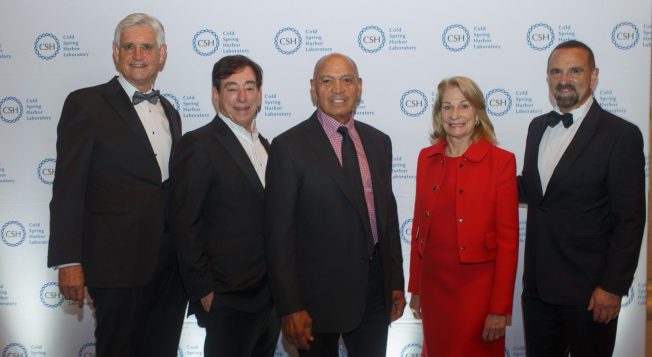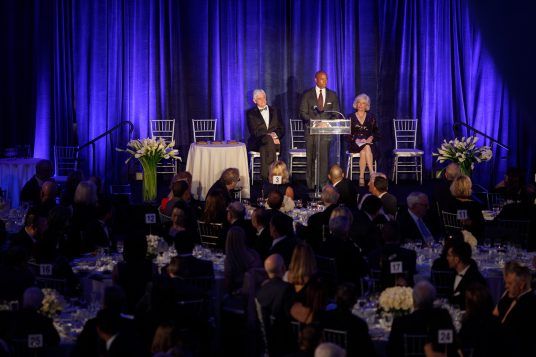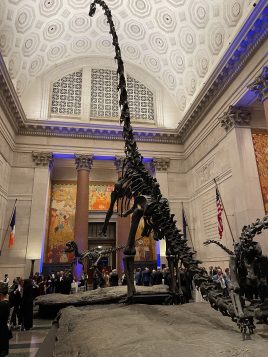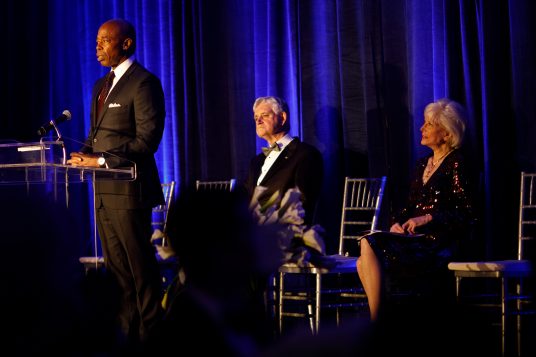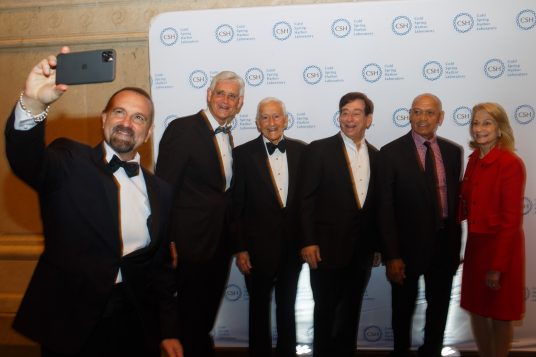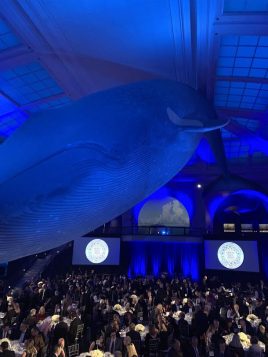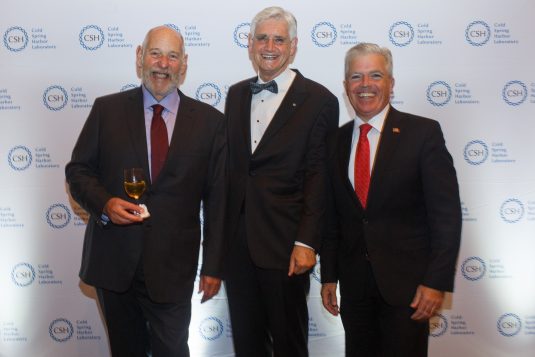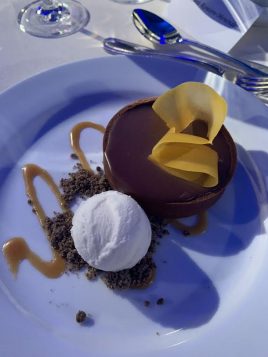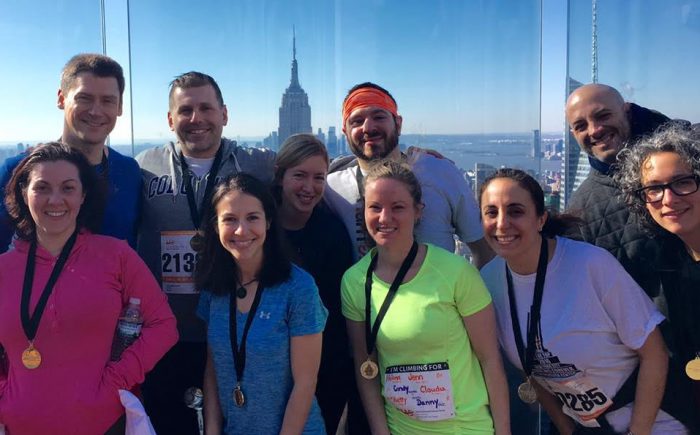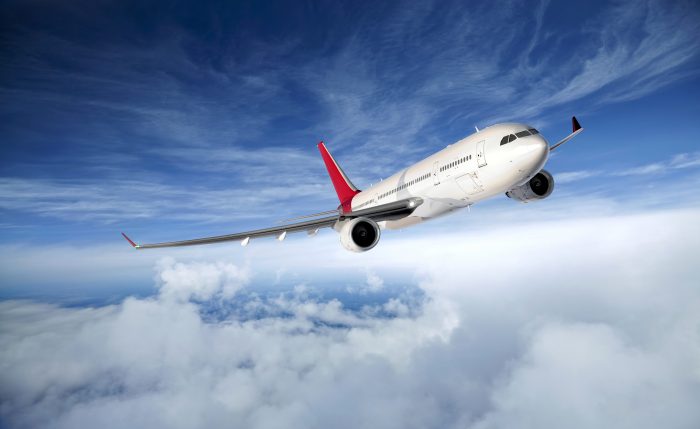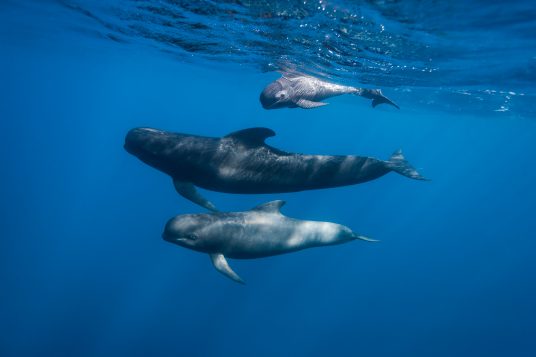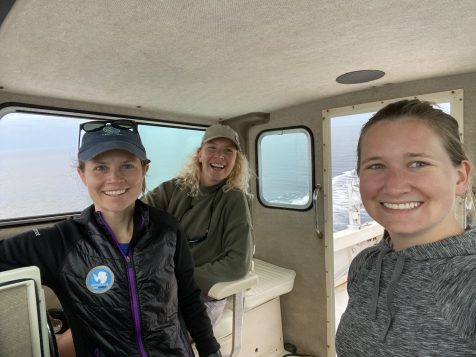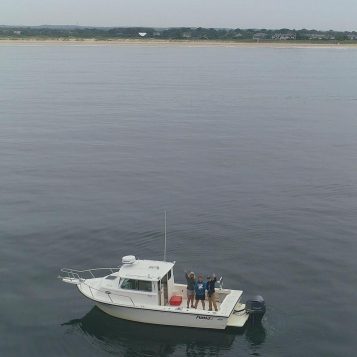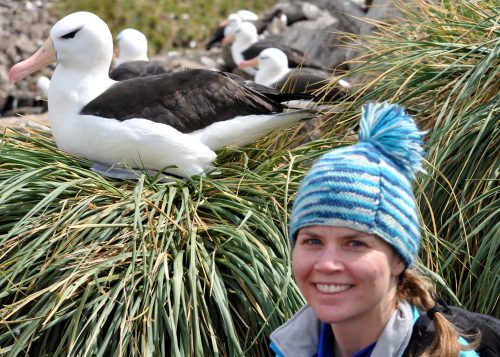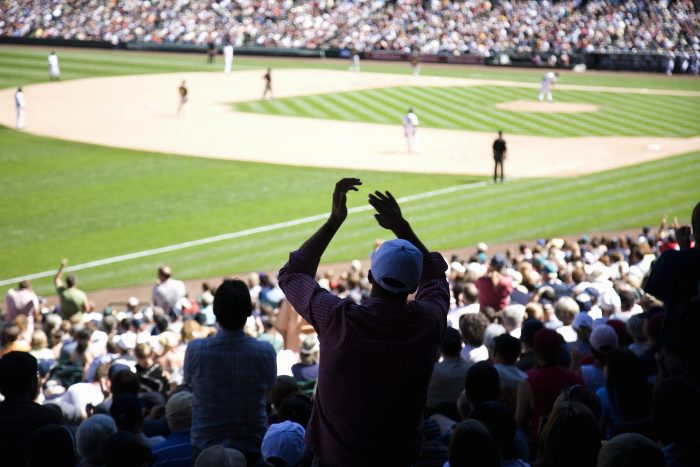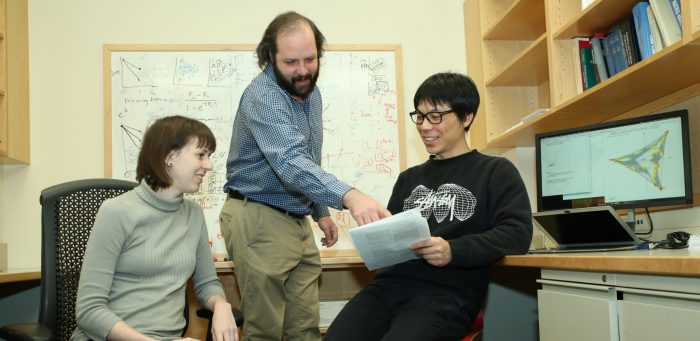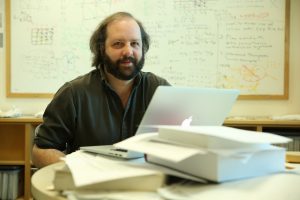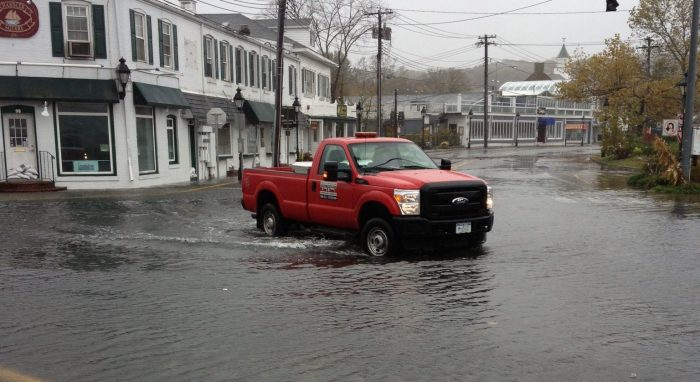By Daniel Dunaief
This November, Cold Spring Harbor Laboratory celebrated baseball’s Mr. October.
The research facility that specializes in studying cancer, neuroscience, quantitative and plant biology hosted its 16th annual Double Helix Medals dinner at the Museum of Natural History on Nov. 17.
The evening, which was emceed by television journalist Lesley Stahl, honored Hall-of-Famer Reggie Jackson, as well as Leonard Schleifer and George Yancopoulos, the founders of Regeneron, the pharmaceutical company that has provided a life-saving antibody treatment for COVID-19.
The evening, which featured a dinner beneath the blue whale at the museum, raised a record $5 million for research.
“When we were standing in the hall of dinosaurs at the museum, it was fantastic,” said CSHL President and CEO Bruce Stillman. “It was one of the first events where people went out like the old days” prior to the pandemic.
Stillman said guests had to have received their COVID vaccinations to attend the celebration.
In addition to establishing a career as a clutch hitter in the playoffs, Reggie Jackson has dedicated considerable energy through his Mr. October Foundation to improve education around the country.
“His Mr. October foundation complements and parallels the DNA Learning Center programs, particularly now that we’ve opened a large DNA Learning Center in downtown Brooklyn that is serving underserved students in lab-based science,” said Stillman.
In his acceptance speech, Jackson said he found it “significant” that he received an honor for his educational efforts off the baseball field.
Yancopoulos, meanwhile, described his roots as the son of first generation immigrant parents from Greece. Yancopoulos highlighted the need for more funding in research and suggested that science helped pull the world through the pandemic. Yancopoulos said the National Institutes of Health should increase its budget 10-fold to meet the research and clinical needs of the population.
“Biotechnology offers the promise of really solving some of the most difficult problems that we face if we want our citizens to live not only longer, but healthier lives,” Schleifer said in a statement.
Mayor-elect Eric Adams, meanwhile, gave a speech about his vision for the future of the city which included, after some prompting from Stillman, increasing science in the education system.
The Double Helix gala, which started in 2006 when the lab honored the late boxer Muhammed Ali, raises money that goes into CSHL’s operating budget to support research and education.
This year, the donations included a generous gift from Astros owner Jim Crane, who introduced his friend Jackson.
Stillman helps direct the funds raised through the dinner to support scientists who are making what he termed “breakthrough discoveries.”
Many of the most significant discoveries come through philanthropic support, Stillman said, which makes it possible for researchers to design high-risk, high-reward experiments.
CSHL Chair of the Board of Trustees Dr. Marilyn Simons, a previous winner, attended the festive evening.
Senior leadership at the lab chooses the honorees. Stillman said CSHL already has two honorees for the event next year.
Previous honorees include actor Michael J. Fox, basketball legend Kareem Abdul-Jabbar, actor and science educator Alan Alda, and newscasters including Tom Brokaw and Katie Couric.
“It is a really spectacular list,” Stillman said. The winners, who receive a medal, have all contributed in some significant way to science or to science education.
The dinner provides an opportunity for supporters of the mission of CSHL, which has had eight Nobel Prize winners work at the lab during their careers, to invite others to hear about research at the lab.
“It was a very inspiring evening,” Stillman said.

